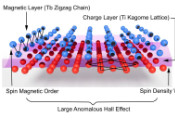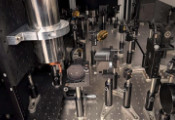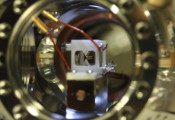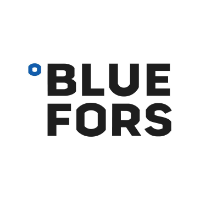Optical Tweezers Help Elevate Single-Molecule Research at Penn State
UNIVERSITY PARK, Pa., July 15, 2025 - The Huck Institutes of the Life Sciences at Penn State has secured a major new asset in structural biology and mechanobiology research with the award of a $750,000 grant from the Office of Research Infrastructure Programs (ORIP), National Institutes of Health (NIH). The grant, awarded to Research Professor Neela Yennawar, supports the acquisition of a Lumicks C-Trap optical tweezers system at the Biomolecular Interactions Core Facility.
The new tool allows researchers to manipulate microscopic objects without physical contact, making it useful for studying a range of delicate materials, including single molecules, nanoparticles and even living cells.
Installed on lease in February 2024, the C-Trap system integrates optical tweezers, confocal fluorescence microscopy — which produces high-resolution images — and microfluidics — which enable “lab-on-a-chip” devices to analyze multiple biological functions at once, among other advancements — within a single platform. This facilitates real-time manipulation and visualization of individual biomolecules under controlled force and fluorescence conditions — opening unprecedented opportunities in single-molecule research across disciplines, Yennawar said.
“The C-Trap is a next-generation instrument that remains rare in U.S. academic institutions,” Yennawar said, noting that these capabilities were previously unavailable at the University. “Its installation at Penn State dramatically extends the capabilities of our existing Huck core facilities and has already advanced research across a broad range of scientific fields, including structural biology, viral replication, DNA repair, chromatin architecture, phase separation and mechanobiology.”
These research domains all involve striving to better understand how the smallest constituents of living organisms function in health and in disease. Advancing this knowledge could lead to discoveries about the causes of diseases and potentially treatments, according to Yennawar.
Yennawar, who directs the Huck Institutes’ Biomolecular Core Facility and co-directs X-ray Crystallography and Scattering Core Facility, serves at the grant’s principal investigator (PI) and led the successful grant proposal development during her tenure as a Huck Leadership Fellow.
“The grant, which supports interdisciplinary structural biology initiatives, was made possible through strategic collaboration across Penn State, including the support of Troy Ott, dean of the College of Agricultural Sciences, and Camelia Kantor, director of strategic initiatives at the Huck Institutes,” Yennawar said.
The grant application was bolstered by co-PI Tae-Hee Lee, professor of chemistry, and an interdisciplinary team of co-investigators and major users from across the University, including the Eberly College of Science, College of Medicine and College of Engineering, Yennawar said. Other key contributors included Phil Bevilacqua, Marina Feric, Mark Hedglin, Chris Keating, Leslie Parent, Lu Bai, Song Tan, Will Hancock, Ruobo Zhou, Chris Yengo, Emily Weinert, Katsu Murakami and Joey Cotruvo. Yennawar also acknowledged the instrumental role of Emily Martell, managing director at the Huck Institutes, in facilitating both the lease and subsequent NIH-funded acquisition of the system.
“The preliminary data we collected using the leased system was instrumental to the success of our grant proposal,” Yennawar said. “Now that the instrument is fully installed, researchers are actively using it, and we’re already seeing strong interest from potential collaborators across Penn State, as well as from other institutions and industry partners.”
Christina Grozinger, director of the Huck Institutes and Publius Vergilius Maro Professor of Entomology, agreed with Yennawar’s assessment.
“This award is a testament to the excellence of the research scientists directing our core facilities,” Grozinger said. “Neela’s leadership on securing this grant exemplifies our commitment to the use of cutting-edge technology as a hub for catalyzing cross-disciplinary life sciences research at the highest level.”
According to Grozinger, the integration of the C-Trap in the Huck Biomolecular Interactions Core Facility strengthens Penn State’s position as a competitive destination for high-impact structural biology and nanomechanics research. As researchers across the life sciences increasingly look to single-molecule approaches to address complex biological questions, she said the instrument stands as a powerful resource for innovation, collaboration and scientific discovery.




































